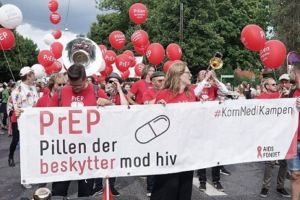News
Denmark could become first HIV-free country in the world
This article is more than 8 years old.
There are high hopes that a relatively new treatment for preventing HIV could break the chain of infection in Denmark

What is good for London and New York could also be good for Denmark, AIDS organisation hopes (photo: AIDS-Fondet)
A simple pill taken once a day and used in the US and Europe has shown encouraging results in stopping the spread of HIV, and AIDS-Fundet, the Danish AIDS organisation, would like to see it used in Denmark.
READ ALSO: Fewer Danes dying of AIDS
The pill, known as Pre-Exposure Prophylaxis (PrEP), has been shown to be safe and effective at preventing HIV infection.
It is described by the Danish health authority, Sundhedsstyrelsen, as “a necessary and much-needed” supplement to existing treatments, and in a written answer to the parliamentary committee on health and the elderly the authority has now given it the green light.
London shows the way
In Denmark, around 100 men who have sex with other men are diagnosed with HIV every year, and the number has remained more or less constant over the last 20 years. In London in contrast, where the pill has been available for some time, the number of newly-infected people has been reduced by 80 percent.
The Danish AIDS organisation has been working for some time now to make the treatment available here.
“We have such good health data in Denmark that we can pinpont the people who are at risk of being infected very accurately,” said Andreas Gylling Æbelø, the head of the AIDS organisation.
“This gives us unique potential for protection because we can target with PrEP a strictly defined group who have a high risk of contracting HIV.”
Targeting the right users
The fund also recommends that the drug is made available as part of a package at health centres where people go to be tested for sexually-transmitted diseases and for advice – as has been done in London. That way, it will also be possible to gather the necessary data in order to see whether the initiative is working.
“Because we can use PrEP in such a targeted way in Denmark, we have an excellent chance of breaking the chain of infection. That is pretty unique. In real terms, it means we could be the first country in the world that manages to halt the spread of HIV infection,” added Æbelø.










































